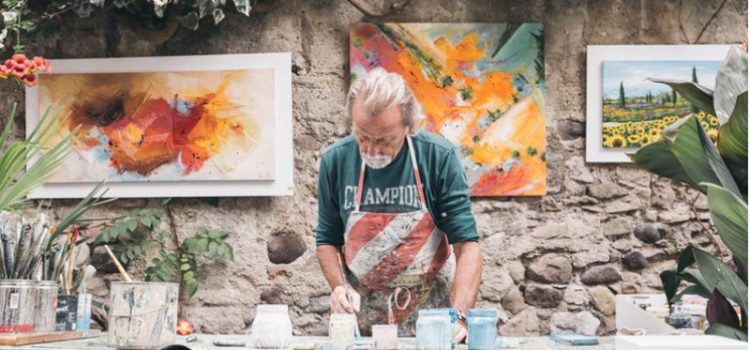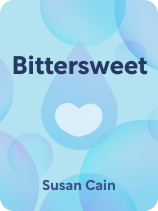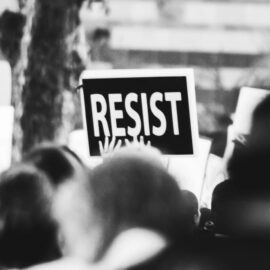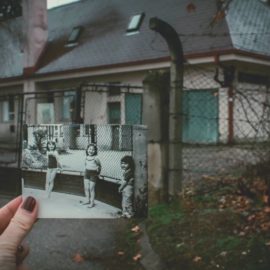

This article is an excerpt from the Shortform book guide to "Bittersweet" by Susan Cain. Shortform has the world's best summaries and analyses of books you should be reading.
Like this article? Sign up for a free trial here.
What is the “tortured artist” stereotype? How are creativity and sadness related? Are naturally creative people more prone to sadness?
The tortured artist stereotype has long been associated with creativity and sadness, and according to Susan Cain’s book Bittersweet, there may be a connection between the two. However, while sadness can trigger increased creativity, it’s not the only way to increase it.
Learn how Cain explains sadness, creativity, and the tortured artist.
The Tortured Artist: Fact or Fiction?
Susan Cain’s book Bittersweet argues in favor of the “tortured artist” trope, which demonstrates that sadness is deeply intertwined with creativity. According to Cain, naturally creative people may be more susceptible to sadness. Many artists, writers, musicians, and other creative people throughout history were prone to states of melancholy, and modern research shows that creative people are highly predisposed to sorrow. Additionally, some studies suggest that people who work in the arts—some of the most creative people in our society—are more likely to have mood disorders.
(Shortform note: Many psychologists agree that there’s an established link between highly creative people and an increased likelihood of mental illness. However, another school of thought argues against the stereotype of the tortured artist. These people criticize the studies that support the link between creativity and mood disorders because the research often relies heavily on anecdotes, studies small sample sizes, and doesn’t include control groups to compare to the sample groups. Other critics argue that researchers should study creativity in more people than just artists to fully understand any connection it might have to mental illness. Finally, some research has found that mental illness hinders rather than bolsters creativity.)
In support of the tortured artist, Cain notes that sadness may trigger increased creative output, even in people who don’t have a naturally creative disposition. This might be because sadness has some benefits: It primes our minds for the high level of focus, openness, and problem-solving that creative pursuits require. Some studies found that people in sad moods displayed sharper focus, greater attention to detail, fewer cognitive biases, and higher memory retention than usual.
(Shortform note: When researchers refer to sadness having positive aspects, like with the tortured artist trope, and being beneficial as described above, they’re usually referring to mild sad moods. Temporary sad moods are normal and an important part of how we react to challenges we face, and they can offer many advantages, as Cain states. For example, participants in one study were less susceptible to misleading information after recalling a sad memory as opposed to a happy one. However, intense, long-lasting sadness needs to be addressed for the sake of the person’s mental health, regardless of any benefits it may bring. There’s likely an underlying cause that won’t go away without help.)
Cain’s Views on Sadness & Creativity
While Cain describes the link between sadness and creativity in her support of the tortured artist trope, she also states that sadness isn’t the only way to increase creativity. Many creative people have joyful and calm dispositions. Additionally, clinical depression can severely dampen creativity, and we’re much more likely to experience important moments of perception when we’re feeling happy.
(Shortform note: As Cain argues, sad and happy moods can both have creative benefits, but they arguably help us with different elements of creativity. We can view the difference like this: Negative emotions like sadness help us with creative problem-solving and aid us in evaluating situations critically. They push us to persevere and find innovative solutions. Positive emotions open our minds to new possibilities, leading us to produce many new ideas. They quiet our critical selves and allow our imaginations to freely explore.)
Instead, Cain argues that we can more accurately attribute a tortured artist’s state of mind to a point where beauty and sadness intersect. This is because creativity has a uniquely transformational effect. When we can’t release our pain, creativity allows us to turn it into something beautiful, like a painting or a song.
(Shortform note: The therapeutic power of artmaking is well-documented, supporting Cain’s argument that creative pursuits allow us to transform our pain. Art therapy can be beneficial in addition to or instead of traditional therapy by allowing patients to express emotions that are difficult to put into words. It can also help patients improve interpersonal skills, increase self-awareness and self-esteem, and discover new insights. Finally, artmaking relieves anxiety and tension.)

———End of Preview———
Like what you just read? Read the rest of the world's best book summary and analysis of Susan Cain's "Bittersweet" at Shortform.
Here's what you'll find in our full Bittersweet summary:
- Why you should embrace a bittersweet disposition in life
- How sadness has the power to foster creativity and empathy
- How to accept your own mortality and the impermanence of life






